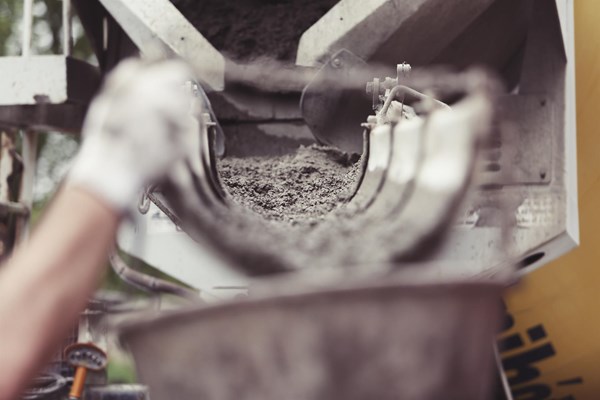
Since Roman times, concrete has remained one of the most commonly used man-made materials on earth. Concrete is an important construction material used extensively in buildings, bridges, parking garages, and roads. Its popularity lies in its strength and versatility.
Most of today’s concrete is a combination of Portland cement, sand, gravel, crushed rocks, and a variety of other admixtures which are mixed together in different ratios to provide specific properties based on weather or necessary rates of hydration or pouring method, will it be pumped out of a concrete pump or will it be poured out of a concrete buggy or bucket.
At Cleveland Construction, we recognize that jobsites placing concrete can pose many safety hazards for workers. Our safety and quality management process include pre-installation meetings with concrete contractors to confirm there is strict adherence to our safety & quality procedures throughout the pour. We have committed much time and energy to help our managers to better understand the proper elements of a successful concrete pour. We know that potential dangers can be avoided by following OSHA’s specific concrete construction standards.
Hazards to be avoided include:
- Chemical burns from the hydration process
- Respiratory irritation from Silica exposure
- Impalement hazard from form stakes
- Poor ergonomics from handling and placement
- Form blowout from inadequate bracing
- Floor collapse on multi-level construction from inadequate shoring
- Vehicle accidents
Burns and Respiratory Irritants Are a Real Danger
Some of the most common injuries to concrete workers are skin irritation and burns. Because of concrete’s chemical makeup, exposure to the substance when wet can result in skin irritation or even first-, second-, or third-degree chemical burns. OSHA reports that concrete workers in the U.S. lose four times as many workdays for skin problems compared to other construction trade workers. To avoid these injuries, workers should always wear all required Personal Protective Equipment. Gloves, long sleeve shirts, long pants, and eye protection are just some of the personal protective items that are often recommended. In addition, suitable respiratory protective equipment must be provided when cutting concrete to minimize inhalation of concrete dust that may contain silica.
Improper Lifting Causes Many Injuries
IIf you’ve ever lifted a bag of cement, you know how heavy it can be. Cement weighs about 150 pounds per cubic foot, so proper lifting procedures and load-carrying techniques must be followed by workers to avoid back injuries. Items should be lifted using one’s legs, keeping the back straight. Better yet, a forklift should be used to move heavier loads when possible.
Form Blowouts Can Be Deadly
Concrete is often poured into forms until it hardens. It is critically important that these forms be properly constructed to withstand the extreme pressure from tons of wet cement. Sometimes the forms break, causing injury to workers nearby. OSHA requirements dictate that formwork be designed, fabricated, erected, and supported in such a way as to withstand all loads of cement. Even when planned properly accidents like the one below from this week can be found in the news much too often. Recently, there was a devastating floor collapse during a concrete pour in Cincinnati that resulted in 4 injuries and 1 fatality.
Vehicular Accidents Are a Major Concern
Concrete construction often requires the use of heavy equipment. Because the work zone in which concrete is poured is often tight, there is little room for error in the operation of vehicles. The immediate environment is always subject to danger. Workers need to pay attention to what’s happening around them at all times to avoid injuries or fatalities.
OSHA guidelines call for workers in this work zone to be properly trained on equipment operation, wear high-visibility safety apparel, use traffic barriers, and pre-plan for the heavy vehicular movement that will occur within the work zone.
While hazards will always exist on any concrete construction site, injuries can be prevented with proper planning and by following safe work practices. Please think about safe work practices involved with your next concrete pour as part of your commitment to TEAM SAFETY.